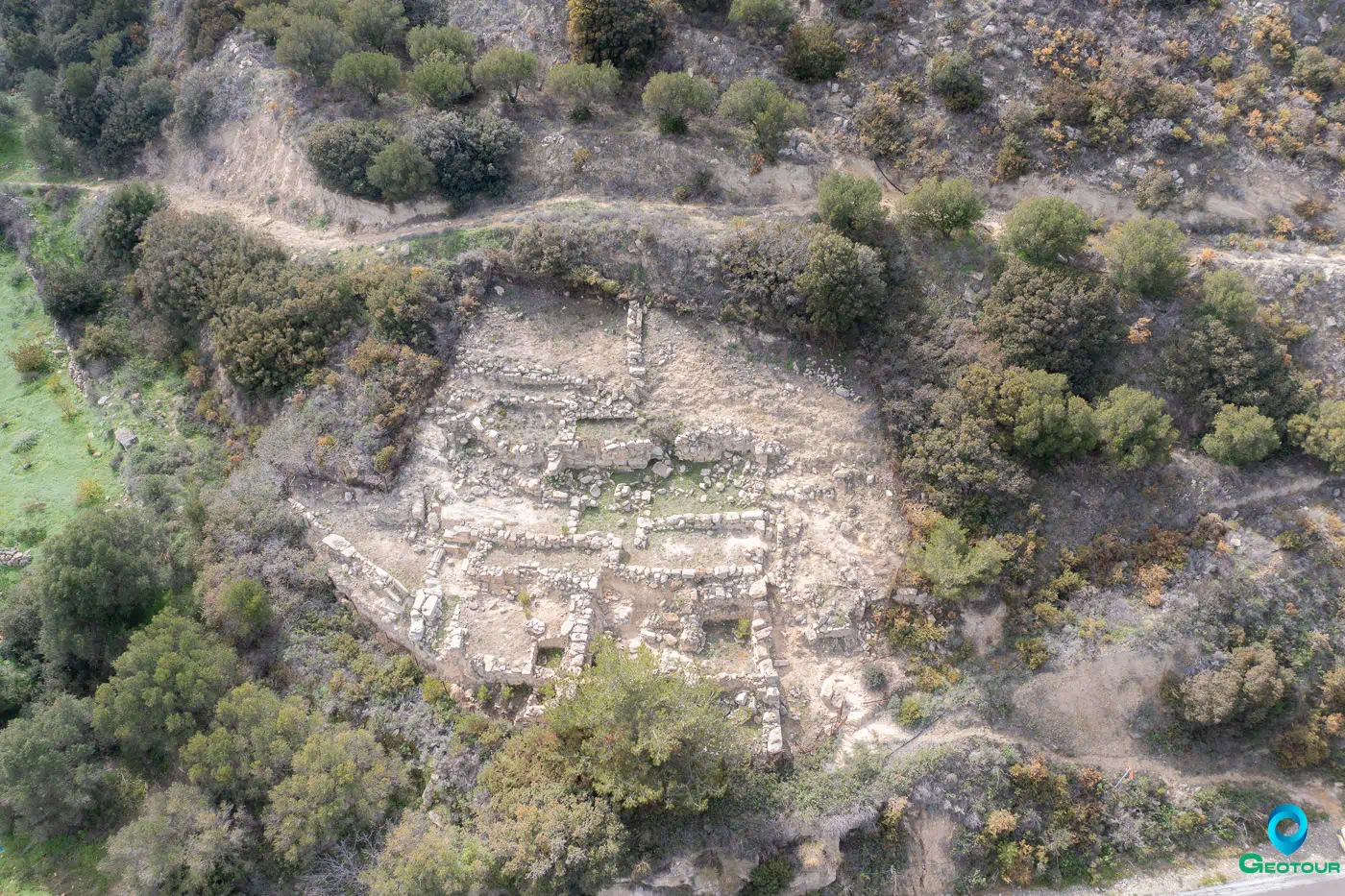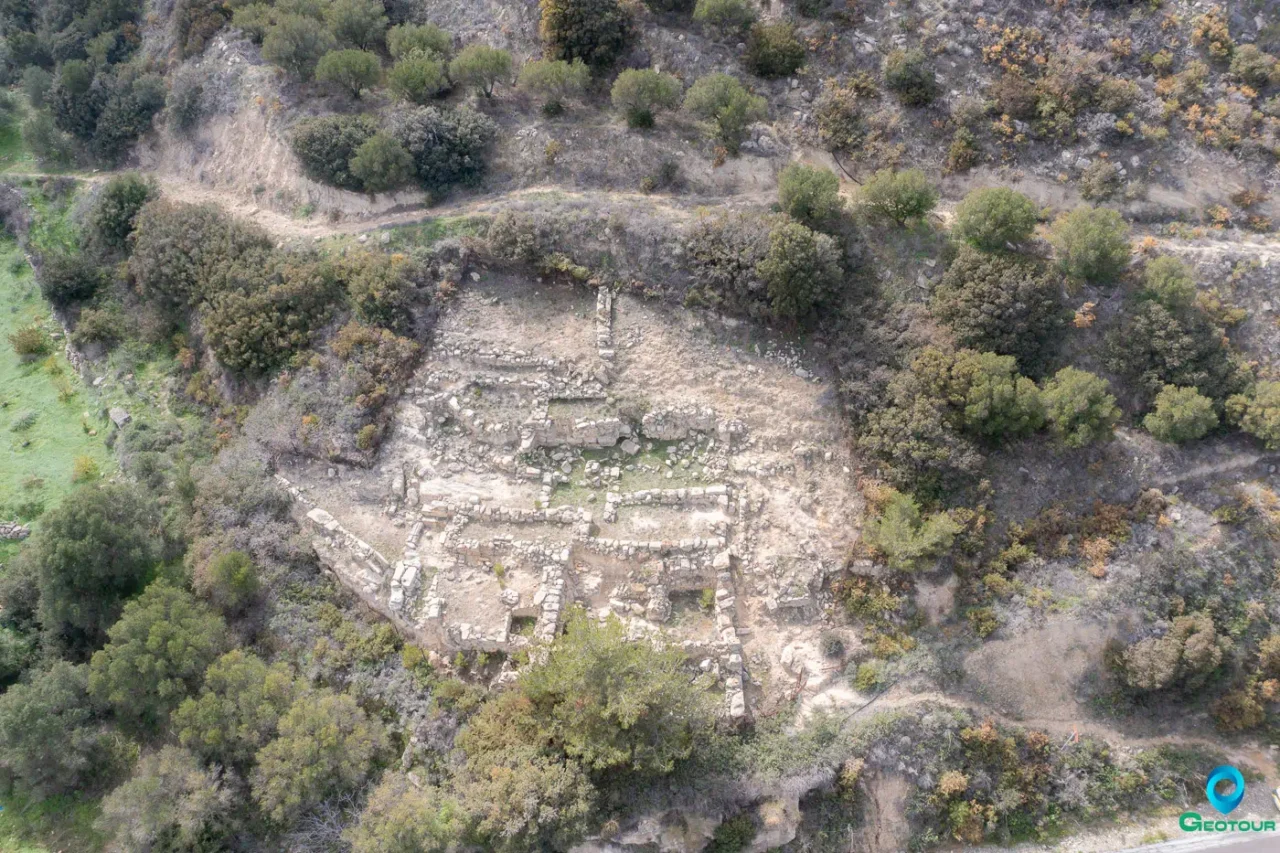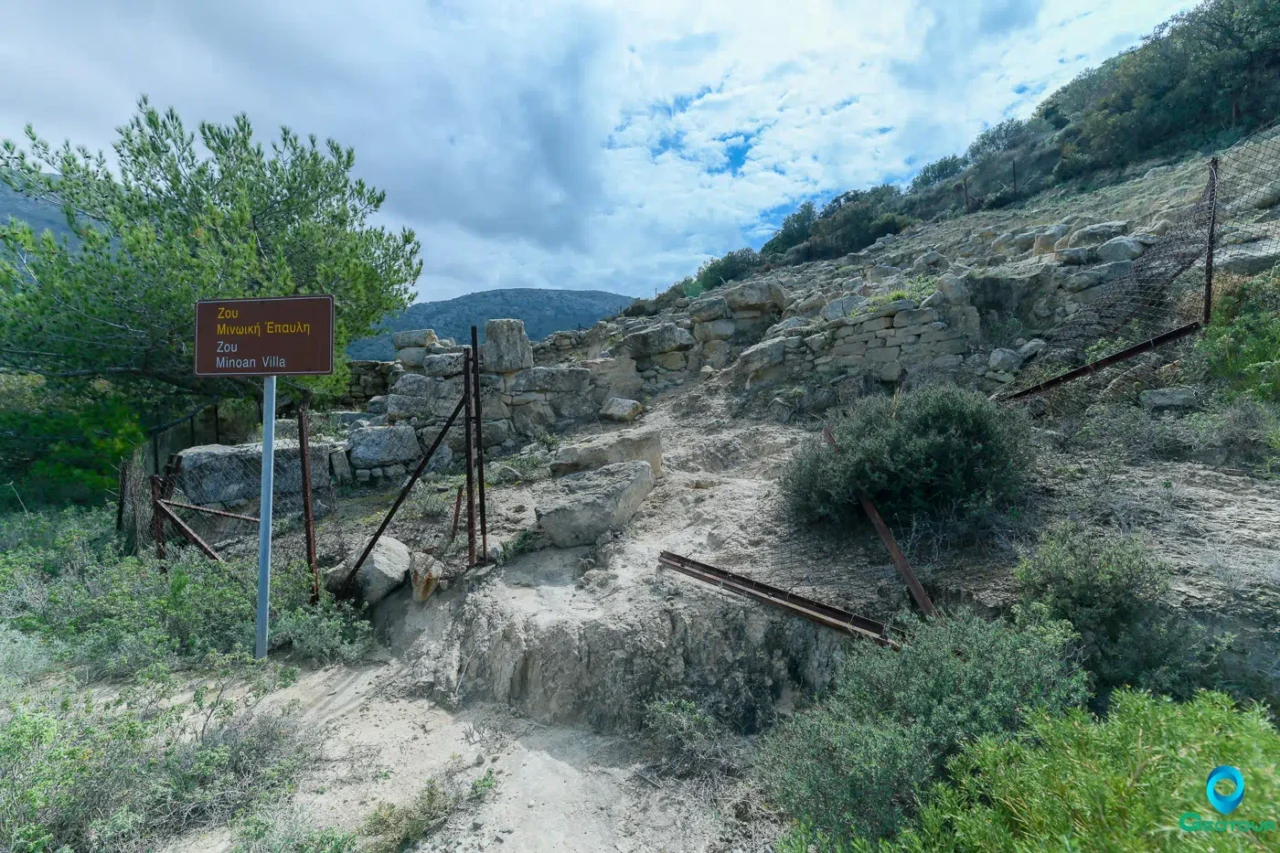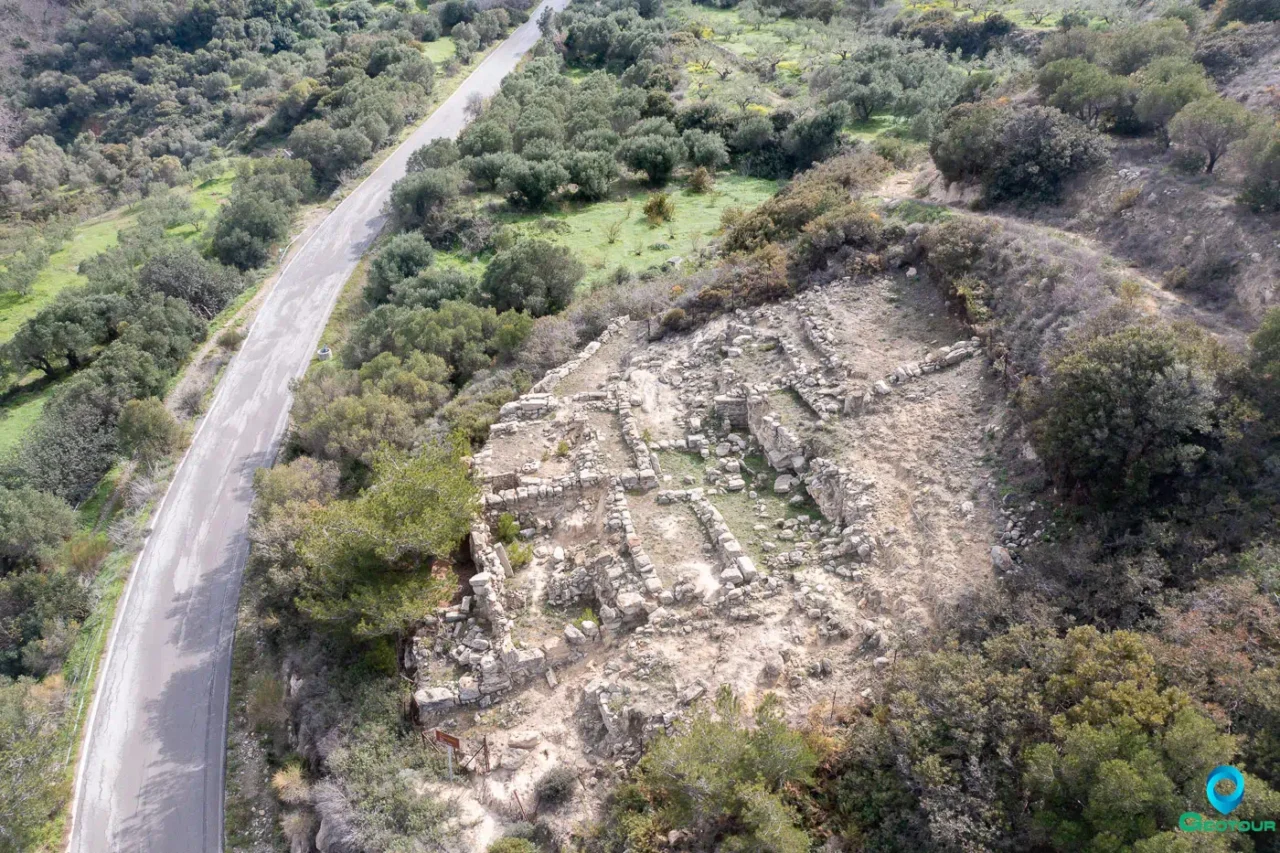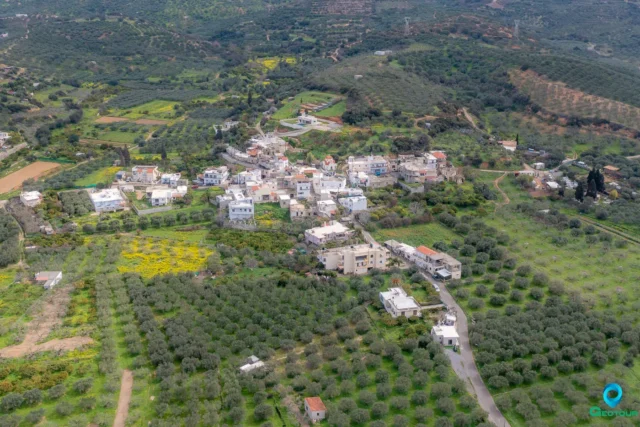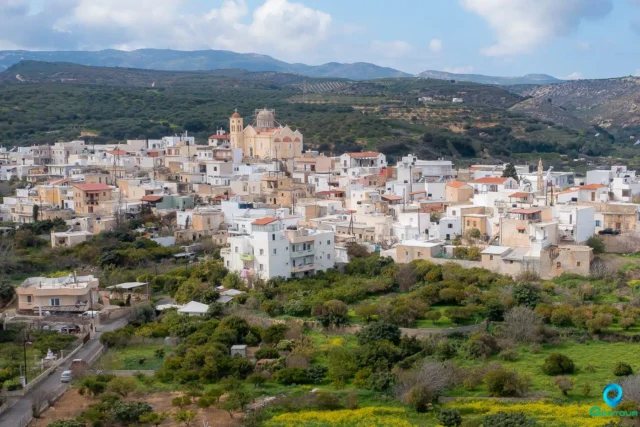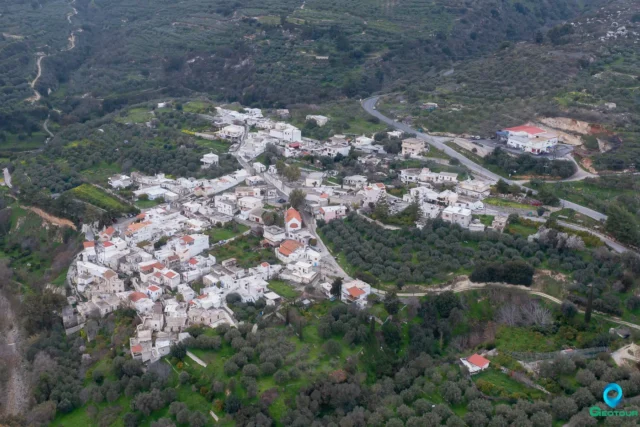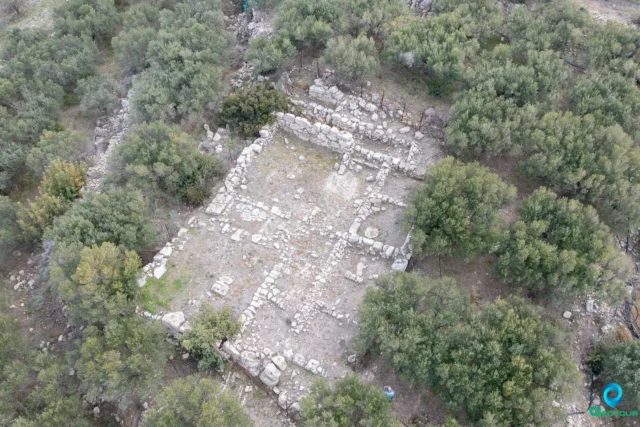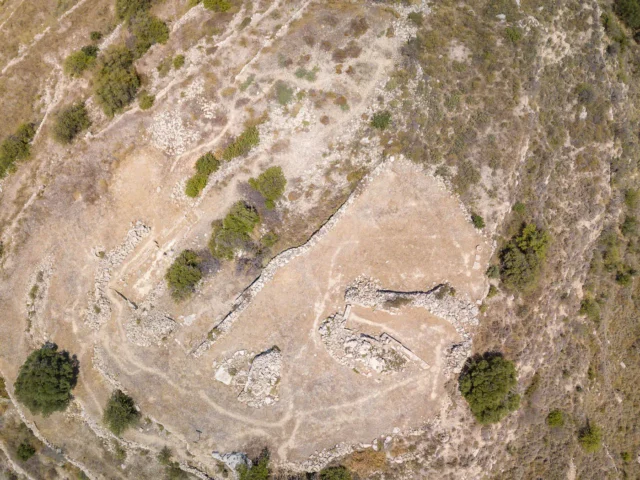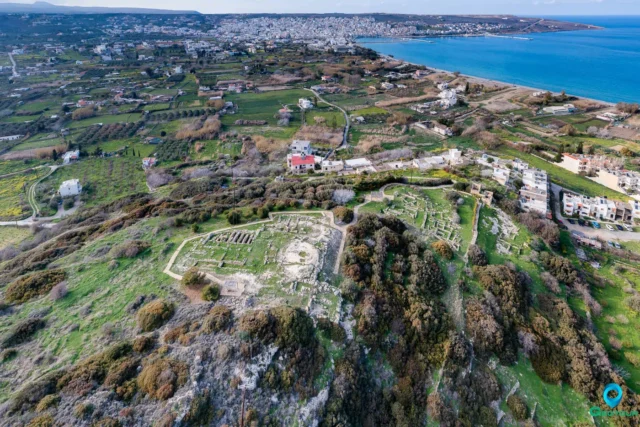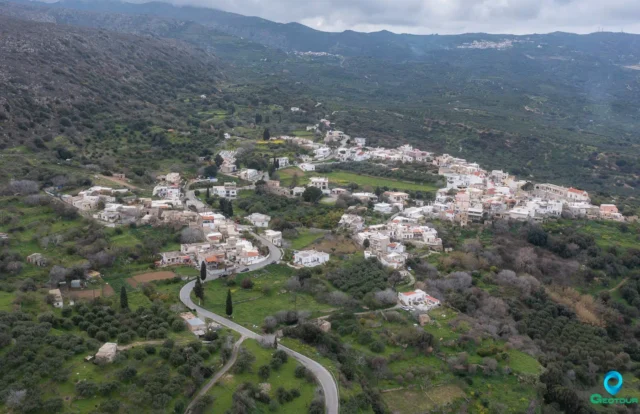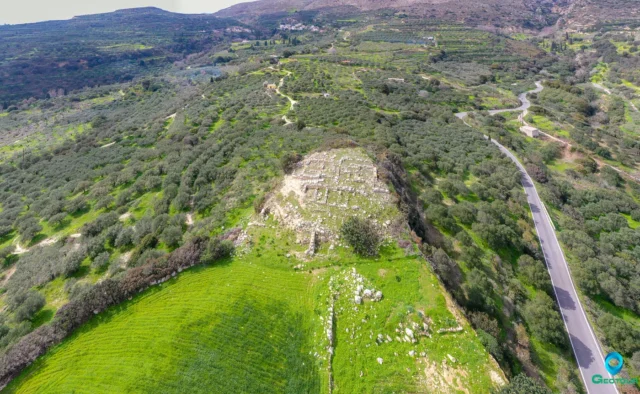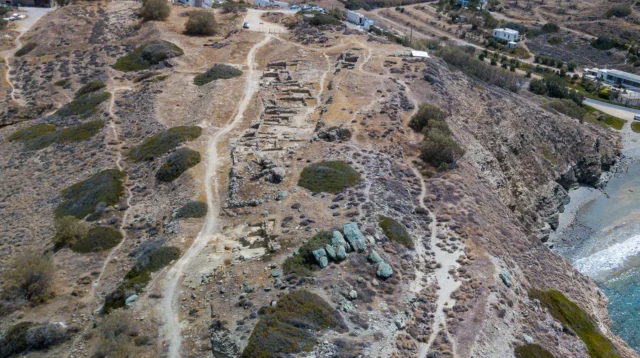The Minoan site of Zou in eastern Crete offers insights into Neopalatial rural architecture and settlement patterns.
Zou is situated in the eastern region of Crete. This places it within a geographical area known for its diverse Minoan sites, including other “villas” or rural establishments. The broader region encompasses sites such as Achladia, Epano Zakros, and others that have been studied to understand the nature of Minoan occupation outside the major palatial centers. The specific geographical details of Zou, such as its proximity to arable land, water sources, and other settlements, would be essential in understanding its economic and strategic role within the Minoan landscape.
Historical Periods
The Zou farmhouse spans a crucial transition in Minoan civilization, covering the Middle Minoan (MM) IIIB and Late Minoan (LM) IA periods.
- Middle Minoan IIIB (MM IIIB): This period (approximately 1700-1600 BC) marks the later phase of the Middle Minoan era, characterized by significant developments in palatial architecture, trade, and social structures across Crete. In eastern Crete, MM IIIB was a time of consolidation and expansion for many settlements. The presence of the farmhouse at Zou during this time indicates that rural areas were also part of this broader cultural and economic growth. During this time Crete experienced unity of culture with centralized organization and strong authority. Communities were based around large cities and towns dominated by palaces
- Late Minoan IA (LM IA): Transitioning into the Late Minoan period (approximately 1600-1500 BC), LM IA is considered the beginning of the peak of Minoan civilization. The eruption of the volcano on Thera (modern Santorini) occurred during this period, having a significant impact on Minoan society, though the exact nature and extent of this impact are still debated among archaeologists. The existence of the Zou farmhouse during LM IA suggests it was part of a network of rural establishments that supported the palatial centers and participated in the broader Minoan economy.
Archaeological Discoveries at Zou
The archaeological discoveries at Zou provide tangible evidence of the site’s history and significance.
Excavations
- Platon’s Initial Excavation (1955): The first systematic excavation of the Zou site was undertaken by N. Platon in 1955. Platon’s work provided the initial dating and interpretation of the site as a rural farmhouse. His findings established the basic chronological framework based on pottery analysis. Platon interpreted the finds as the remains of a farmhouse, dated to the Middle Minoan (MM) IIIB–Late Minoan (LM) IA period.
Re-examination by Mantzourani and Kanellopoulos (2004): In 2004, Eleni Mantzourani and Chrysanthos Kanellopoulos revisited Zou as part of a larger research project examining Neopalatial buildings in eastern Crete. This re-examination likely aimed to reassess Platon’s original findings, apply modern archaeological techniques, and contextualize the site within a broader understanding of Minoan rural settlements. Their research project included sites like Achladia and Epano Zakros. This re-examination was aimed to study the architecture and topography of the aforementioned sites.
Notable Artifacts
Dark-on-Light Pottery: The most significant artifacts from Zou are the dark-on-light pottery sherds, which are characteristic of the MM IIIB to LM IA periods. This pottery style involves painting dark designs on a light-colored background, often featuring geometric or stylized floral motifs. The presence of this pottery helped establish the chronological framework for the site and links it to broader patterns of ceramic production and consumption in Minoan Crete.
Linear A Tablet: At the country house on Pyrgos, a hill to the west and near the village, there was a broken tablet of the Linear A script.
Architectural Remains
The site consists of the remains of a Neopalatial building. The term “Neopalatial” refers to the period when Minoan civilization reached its zenith, characterized by the construction of palaces, villas, and other monumental structures. The architectural style of the Zou farmhouse likely reflects broader trends in Minoan architecture, such as the use of ashlar masonry, courtyards, and multiple stories.
The buildings at Plati are datable to the Late Minoan I and III period. A number of rather nondescript small rooms possibly belonging to three houses were explored around an open area possessing a hearth, possibly a central court of a single unified complex or the public court of a town.
Current State
As of 2004, the Zou site was re-examined as part of a research project. The current state of the site likely involves ongoing analysis of the architectural remains, pottery, and other artifacts recovered during the excavations. This analysis aims to refine the dating of the site, reconstruct its function, and understand its role within the broader Minoan landscape.
Key Points
- Location and Accessibility: The farmhouse is located in the eastern part of Crete.
- Active Historical Periods:
- Middle Minoan IIIB
- Late Minoan IA
- Historical Significance: The site contributes to the understanding of rural settlements and architectural patterns during the Neopalatial period in eastern Crete.
- Current Status: The site was revisited and re-examined in 2004 as part of a research project.
References
-
Davaras, K., 1989. Guide to Cretan antiquities, 2. rev. ed. ed. Eptalofos S.A, Athens, Greece.
- Giorgos Vavouranakis, Eleni Mantzourani, 2011. The Minoan Villas in East Crete: Households or Seats of Authority? The Case of Prophitis Ilias Praisou. Hesperia Supplements 44, 125–135.
- Mantzouranē, H., Betancourt, P.P., Davaras, K. (Eds.), 2012. Philistor: studies in honor of Costis Davaras, Prehistory monographs. INSTAP Academic Press, Philadelphia.
- Mantzourani, E., Vavouranakis, G.O., 2005. Achladia and Epano Zakros: A Re-Examination of the Architecture and Topography of Two Possible Minoan Villas in East Crete. Opuscula Atheniensia 30, 99–125.
- Petrakis, V.P., 2006. Late Minoan III and Early Iron Age Cretan Cylindrical Terracotta Models: A Reconsideration. Annu. Br. Sch. Athens 101, 183–216. https://doi.org/10.1017/S0068245400021316
- Tsipopoulou, M., 1995. Achladia – Scavi e ricerche della Missione Greco-Italiana in Creta Orientale (1991-1993), in: Tsipopoulou, M. & L. Vagnetti (Ed.), Late Minoan III Sitia. Patterns of Settlement and Land Use. In Achladia.

